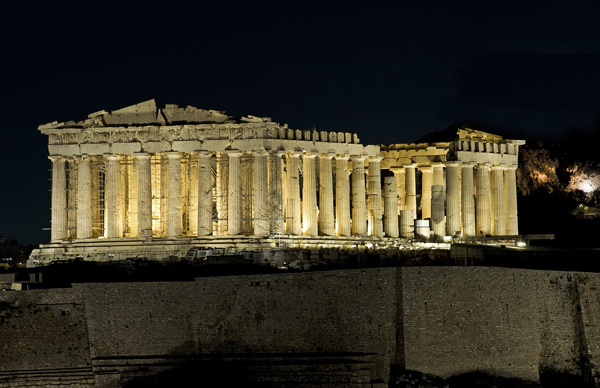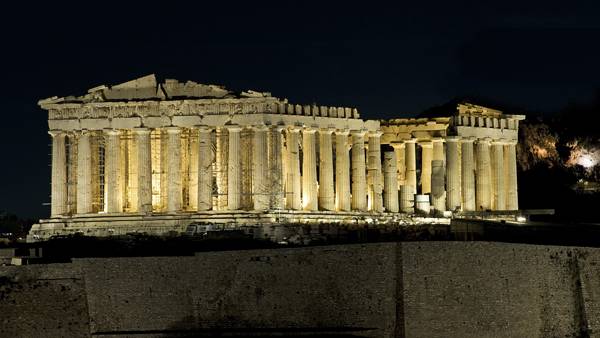Virgin Sacrifice and the Meaning of the Parthenon
Source: thedailybeast.com

Was the Parthenon used as a site for virgin sacrifice? A new book contends that we may not really understand this iconic monument.
Don DeLillo’s novel The Names opens with the narrator wandering in modern Athens, trying to avoid the city’s imposing past. “For a long time I stayed away from the Acropolis. It daunted me, that somber rock… The weight and moment of those worked stones promised to make the business of seeing them a complicated one.” His reticence suggests something sacred lingering in the stones, but it also reveals the difficulty of seeing the full complexity of ancient monuments. It’s all too easy to project our own values onto famous structures of the past and neglect the traces of their original meanings.
The Parthenon is the most iconic building on the Athenian Acropolis, and it has evoked a dizzying range of responses over the centuries. The Ottoman Turkish writer Evliga Celebi looked at its sculpted frieze and saw crocodiles, jinns, demons, mice, and Satan. The French Romantic poet Alphonse de Lamartine described the Parthenon in more secular, aesthetic terms, declaring it “the most perfect poem ever written in stone on the surface of the earth.” In 1998, a curator at the British Museum, perhaps feeling defensive about the museum’s ownership of ancient sculptures hacked from the Parthenon in the nineteenth century, saw quite a different meaning in the marbles. He declared them to be “a pictorial representation of England as a free society and the liberator of other peoples.” It must have come as a surprise to classics scholars and the public to finally learn that this was what the ancient Greeks had been depicting.
In The Parthenon Enigma, New York University classicist Joan Breton Connelly attempts to strip away layers of accumulated interpretation and offer a new understanding of the Parthenon and those who built it. The fame of the fifth-century Parthenon makes it tempting to think of the site as essentially static, frozen in some eternal perfection of harmonious angles and white marble. But the Acropolis has a long and tumultuous history surrounding the brief ascendance of classical Athens. Neolithic humans lived in the caves pocking its slopes, and by around 1400 BCE a fortified palace was built atop the Acropolis. Its steep slopes and accessible water sources made the hill a naturally defensible spot, but early inhabitants also built protective walls so enormous they were later termed Cyclopean: it was believed only Cyclopes would have possessed the strength to construct them.
By the end of the fifth century, the Parthenon and two other temples stood on the Acropolis. Englishman Cecil Rhodes was eager to emphasize that the Athenian politician Pericles funded this extravagant building program with the proceeds of Athens’ growing empire. As the British Empire flourished in the late 19th century, Rhodes discerned a political ancestor for England in Periclean Athens: “Through art, Pericles taught the lazy Athenians to believe in empire.” Empire, Rhodes seemed to think, was just the honest result of industrious work.
Long before the rise of the British Empire, the Acropolis was already a symbol of Athens’ glorious past: provincial Roman coinage depicted its splendors, and many elite Romans visited the site. But by the end of the sixth century CE the Parthenon became a Christian church dedicated to the Virgin Mary, complete with baptistery and apse. It morphed again in 1458 when the Ottoman Turks converted the structure into a mosque. And in 1687, the Venetian army fired an estimated 700 cannonballs at the Parthenon, destroying a substantial portion of its ceiling and sides.
What would the Athenians of Pericles’ day have seen when they looked at the Parthenon? This is a motivating question of Connelly’s book, and it’s impossible to answer with total certainty. After acknowledging this, she gamely plunges into an interpretation that challenges conventional wisdom about a key feature of the Parthenon.
[...]
The traditional interpretation of the Parthenon as treasury and monument to Athenian democracy has the advantage of not sullying our image of the rational Greeks with stories of virgin sacrifice. But a line from Euripides’ fragmentary play shows just how much ancient democratic values may have differed from our own. The individual, even if royal, was subordinate to a larger group. Euripides gives the following words to the mother of the girl Erechtheus sacrificed: “I love my children, but I love my country more.”
Read the full article at: thedailybeast.com






















